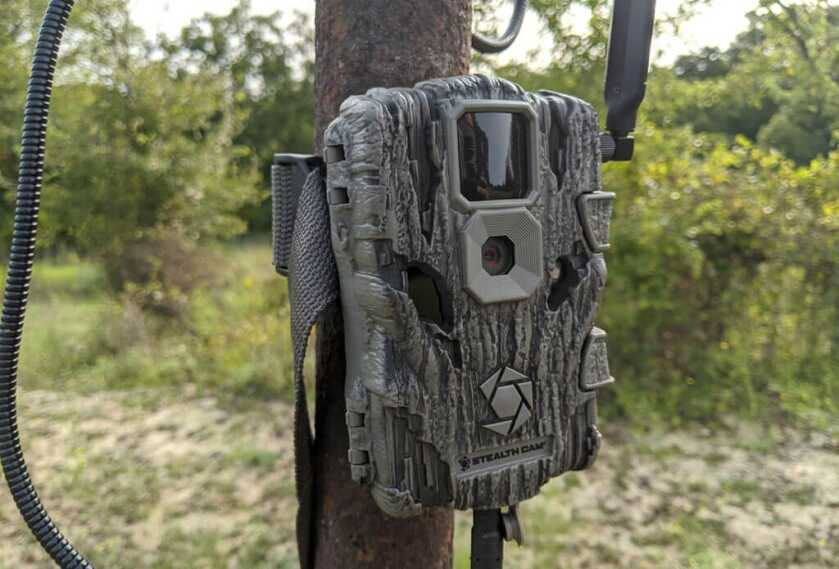
Wireless cellular trail cameras have historically been reserved only for the hunters with the deepest pockets. Fortunately, as is the case with most technology, cellular cameras have become more affordable and user-friendly in the last 10 years, and the Fusion Wireless Trail Cam from Stealth Cam might be the culmination of that trend.
At only $200, the Fusion costs less than almost any other cellular camera on the market, and monthly upload plans start at $5 for 650 photos and go up to $20 for unlimited photos. Paired with a Stealth Cam solar battery for $70 and a memory card, you can run a self-sustaining camera anywhere on your hunting ground for less than $300.
The camera ain’t perfect (more on that below), but if you’re looking for an entry-level cellular cam to scout the back 40 for deer movement or keep an eye on the hog feeder, the Fusion is worth a look.
Specifications
- QR Code Scan Set-Up
- Best night images in the price category
- 26 Megapixel (16mp/8mp/4mp)
- 4 Power IR Emitters
- 80-foot IR flash range
- Security Mode (re-write SD memory)
- Reflex™ Trigger – 0.8 seconds
- Matrix ™ Advanced Blur Reduction
- Retina™ Low Light sensitivity
- 16:9 Wide Image Ratio
- Quick Set pre-programmed option.
- Burst Mode 1-6 images per triggering
- 3-59 sec / 1- 59 min recovery time out
- Time / Date / Moon Phase / Name Stamp
- GEO-TAG GPS Tagging
- SD Card slot up to 32GB*
- Operates on 8 AA batteries
- External power jack for 12V battery box
The Great
Much like the climactic scene in Clint Eastwood’s famous spaghetti western, the Fusion Wireless Trail Cam is a three-way standoff between the great, the average, and the ugly.
First, the great. Cost is a major advantage. Two-hundred bucks is about as cheap you’ll find a day/night cellular trail cam with these features, and Stealth Cam offers photo upload plans that you can tailor to your needs and budget. The camera will upload unlimited photos to your phone for $20/month, which would be a good option for the months around hunting season. Once the season ends, users can bump it down to $5/month for 650 images or $10/month for 2000 images. Paying annually reduces those costs by 20%, and monthly plans also include one year of cloud storage.
With one camera at a single feeder, I’ve received about 3,700 photos since I set up the camera in early September. Right now, I’m paying for the unlimited plan, but I think I’d be fine with 2,000 images for $10 per month.
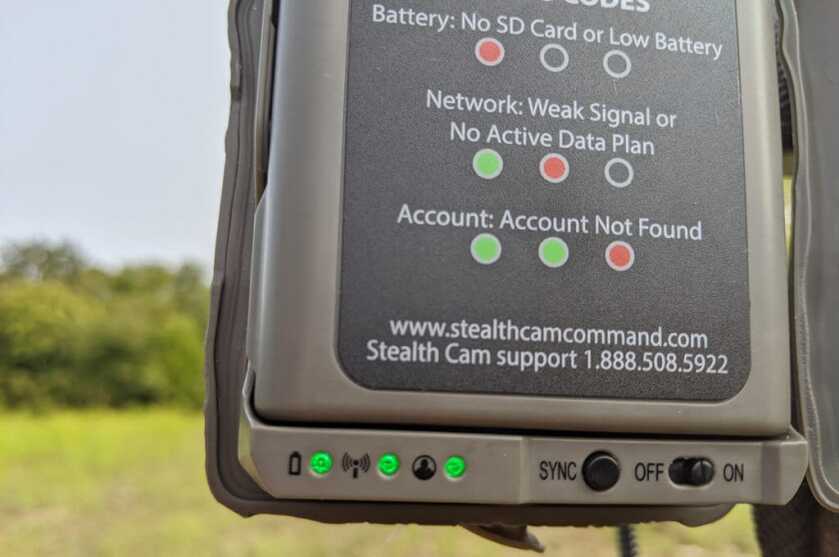
These cameras are also supremely user-friendly. Set-up is an easy four-step process:
- First, the user chooses the cellular carrier that gets the best signal in the area in which the cameras will be installed (Verizon or AT&T). I set up the camera on some private land, so I just asked the landowner which carrier gets the best signal and ordered a camera with that carrier.
- Next, users download the Stealth Cam Command app to an iPhone or Android and scan the QR code located behind the camera’s battery compartment.
- That QR code prompts users to create an account and input credit card info. Once users create an account, they install the batteries and SD card, and sync the camera.
- After users have an account linked to their app, adding another camera is as simple as scanning the QR code on the camera.
I’m not particularly tech savvy (I’m constantly asking my college-age sister-in-law to set up the internet TV Hulu thing), but I had my camera up and running in a matter of minutes. Once it’s set up, all the camera’s functions can be controlled from the app. Users can set the upload frequency (from instant to once per day), upload resolution, upload time, operating hours, photo bust, and a host of other settings.
For a full description of the setup procedure, check out the camera’s user manual.
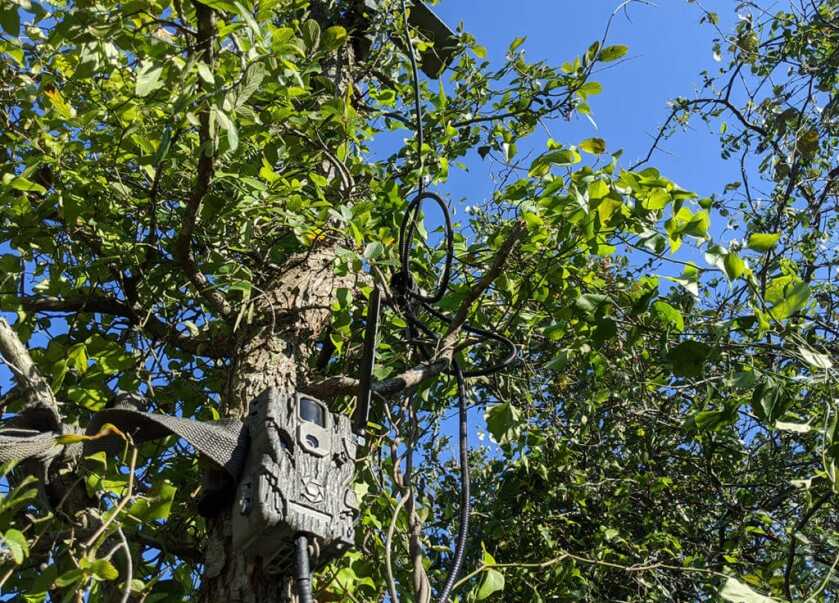
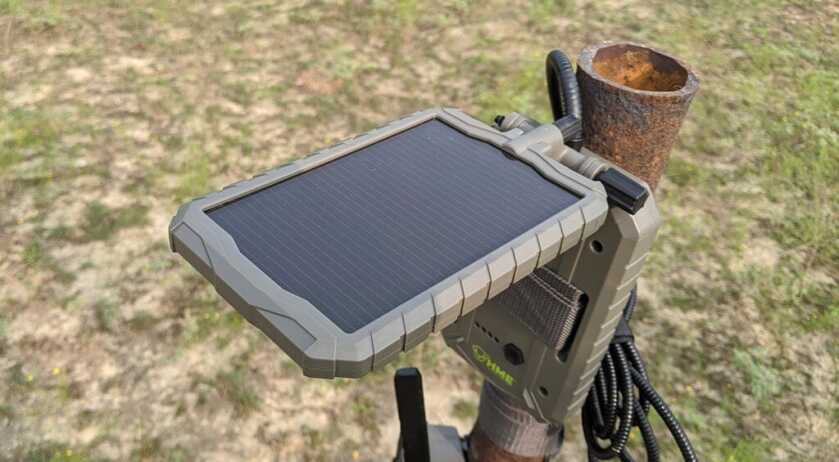
It’s obvious that Stealth Cam (and their parent company, GSM Outdoors) spent a lot of time thinking about how to make these cameras accessible to all hunters—no matter their budget or familiarity with technology. For that, this camera receives high marks.
The Average
There’s no such thing as a free lunch, of course. Users save money on the camera and upload plans, but those savings come with a cost: namely, upload photo quality.
The camera itself is fine. Twenty-six megapixels is more than enough to capture sharp images at the distances that will trigger the camera’s shutter. But the upload process reduces that clarity so much that it’s tough to tell how many points in a buck’s rack. To give you an idea of how much the image quality is reduced, check out the images below. The pics on the left were uploaded to my phone, and the right I pulled from the SD card.
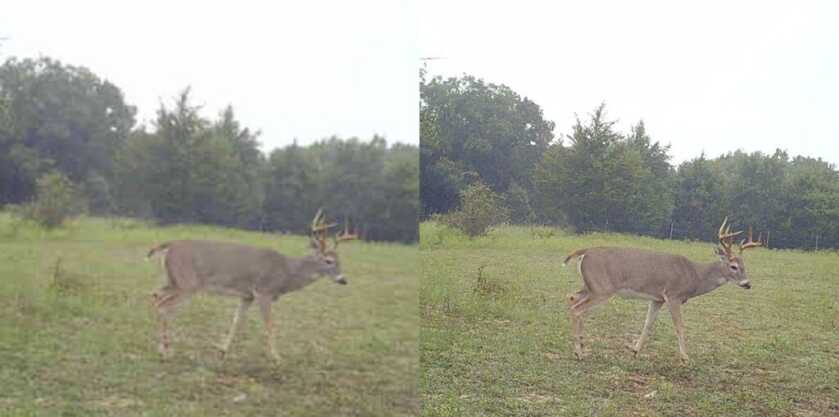
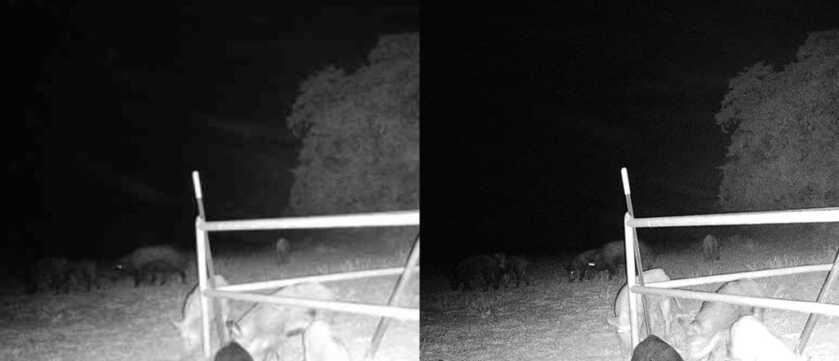
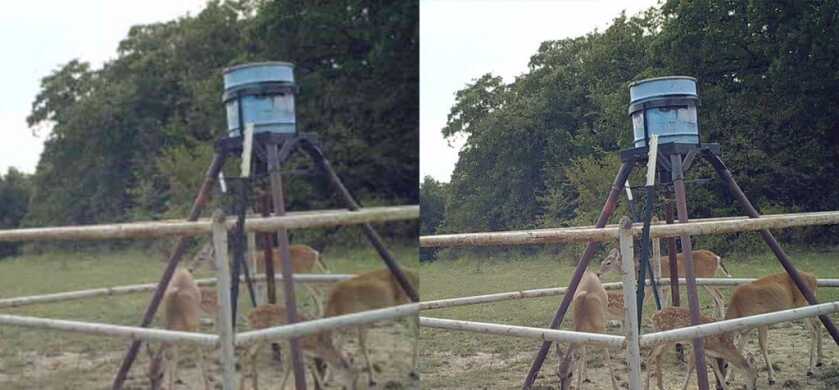
The uploaded photos aren’t bad, but they aren’t great. I was looking for whitetail and hogs at this feeder, and the camera lets me see the number of animals visiting the feeder and when they chose to visit. I could tell the difference between does and bucks, and I could usually tell the difference between old bucks and young bucks. I could do all of this without visiting the feeder and scaring away the game, which is always a good thing, especially during hunting season. But the resolution wasn’t high enough to count points, so if you’re hoping to differentiate between a big buck and a monster, you might have a hard time.
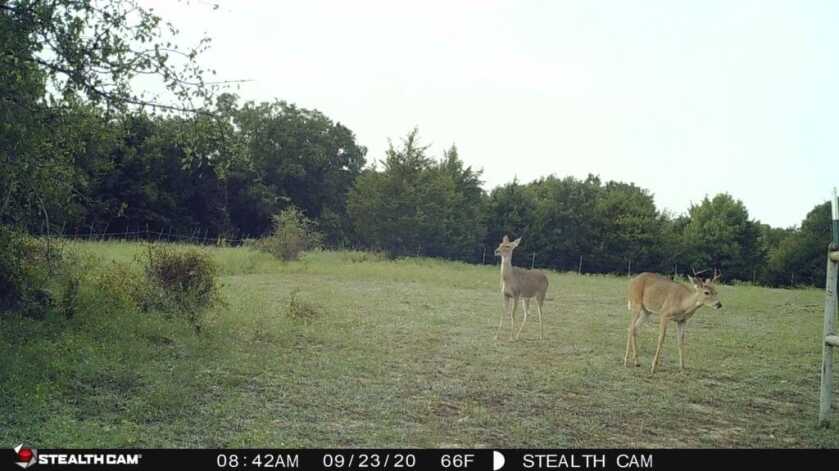
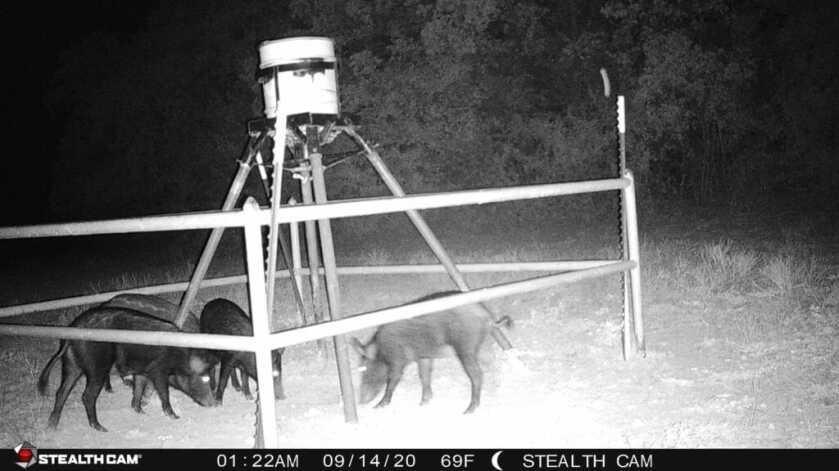
I call this “average” rather than “bad” because there’s nothing in the product description or the user’s manual that claims uploaded images will have a certain resolution. Stealth Cam isn’t claiming one thing and delivering another. But users should be aware of the image quality before purchasing the camera.
The Ugly
Poor image quality I can overlook or work around, but failure to upload images is another story. Cellular trail cams aren’t worth the cost if they don’t reliably upload photos, and I discovered late in the season that my camera had failed to upload when I set it to “instant upload.”
I installed this camera in September, and I usually had it set to upload photos twice per day. This conserves battery, and I had no need to know exactly when animals were at the feeder. I saw whitetail most days and hogs most nights. I checked the app each time I refilled the feeder, and the camera captured my attempts to hoist the corn bag into the hopper.
But when I started hunting that feeder, I set the camera to “instant upload” and noticed that not all photos were being uploaded to the app. One morning, I saw a group of does in front of the feeder for several minutes and only saw one photo pop up on my phone.
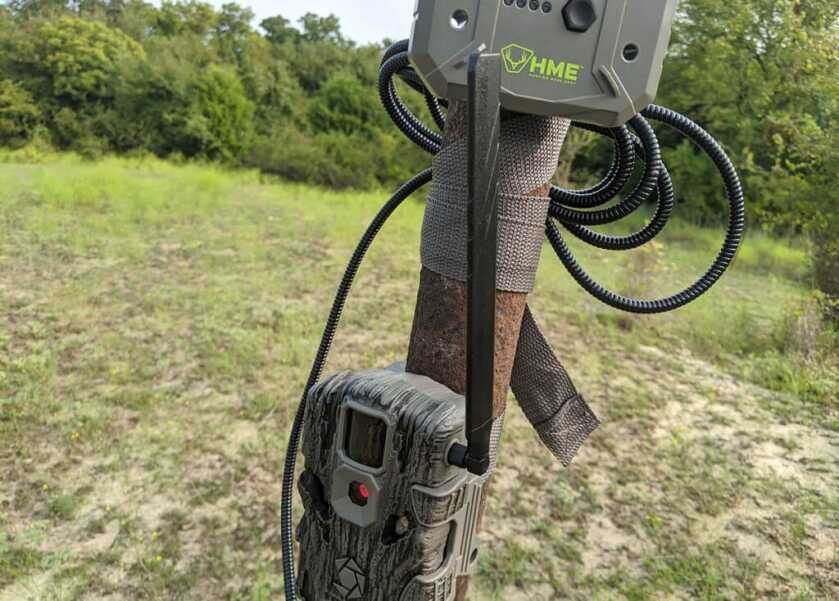
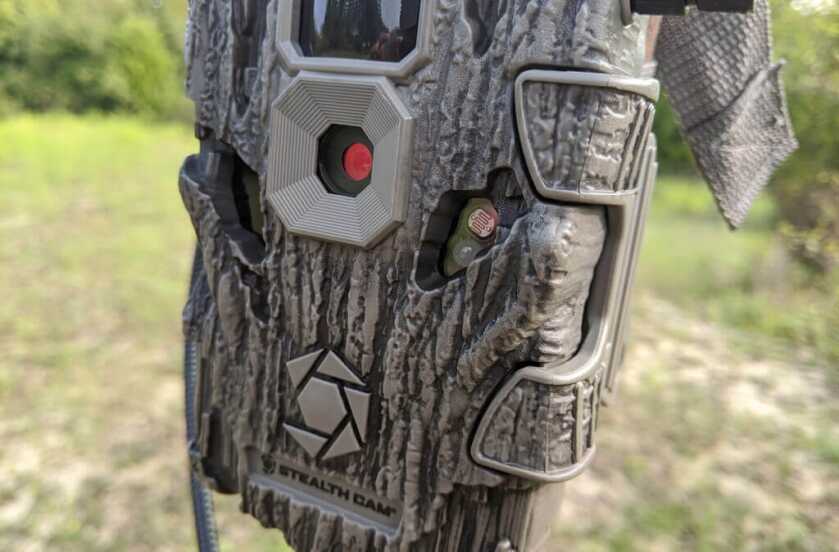
According to a company rep, “instant upload” can sometimes keep the camera from uploading photos because it’s constantly trying to contact the server. To get around this problem, Stealth Cam includes the “instant group” upload option. This setting uploads photos as soon as movement stops for a period of time, which captures and then uploads all photos taken while animals were in front of the camera.
Set to “instant upload,” the camera started working properly again.
Bottom Line
While I think it’s fair and necessary to alert users to the camera’s potential weaknesses, I don’t want to sound overly critical. The Fusion uploaded the vast majority of photos, which told me the deer were coming most mornings between 7 am and 9 am. This buck walked out around 8:25 am, and I made a clean shot from 75 yards using Springfield’s new Model 2020.
If I had been using a non-cellular trail cam, I may have scared this buck away by constantly visiting the camera to retrieve the photo card. But the Fusion helped me bag him, and I plan on setting up this camera in the same spot next year.


Great article, good read and lots of useful information for a novice trail camera operator. I am 52 and have been hunting all of my life without using any type of trail camera, not technologically savy myself lol. But I am seriously leaning towards getting into the technology, I can see the advantages that this would bring to the table, thank you